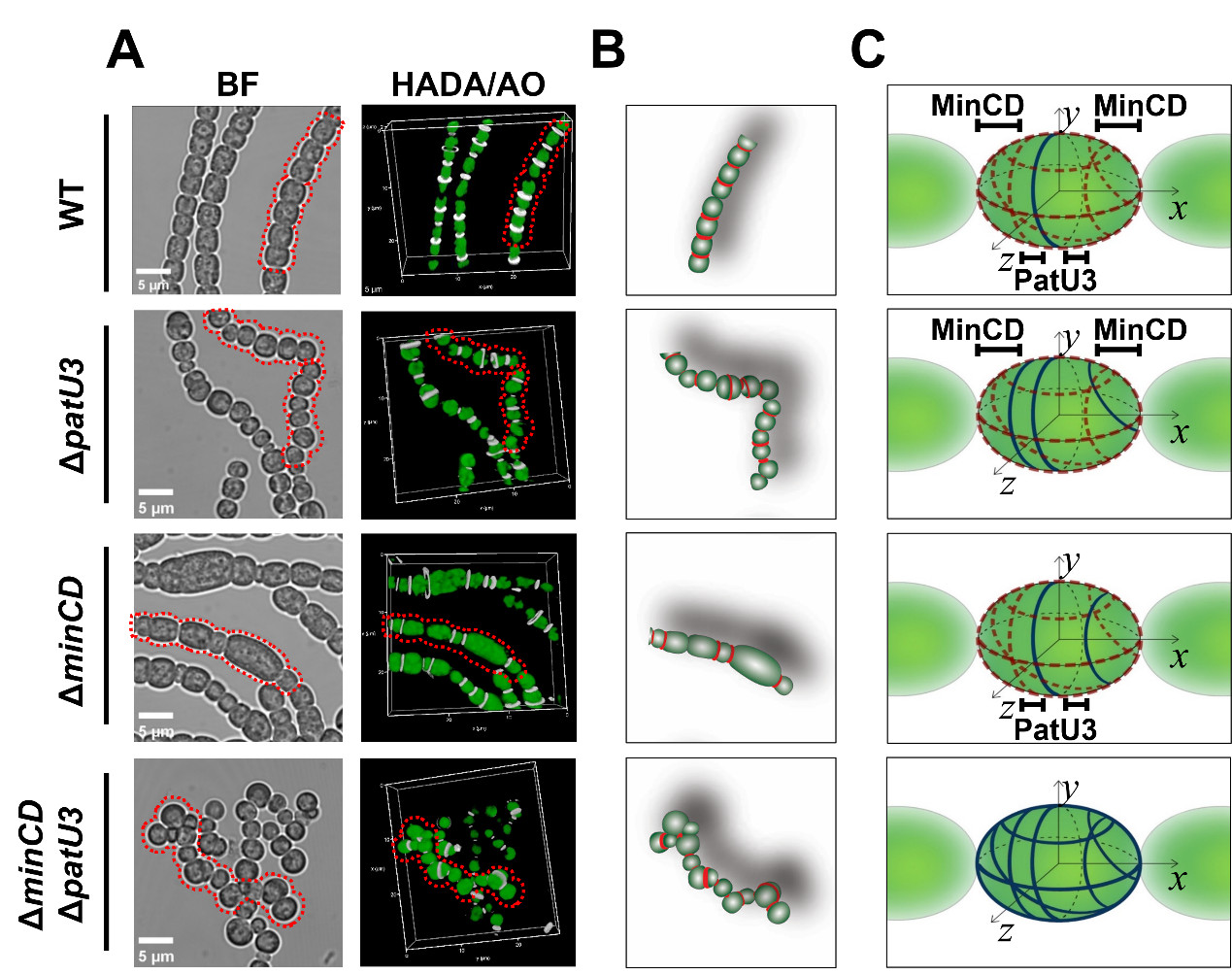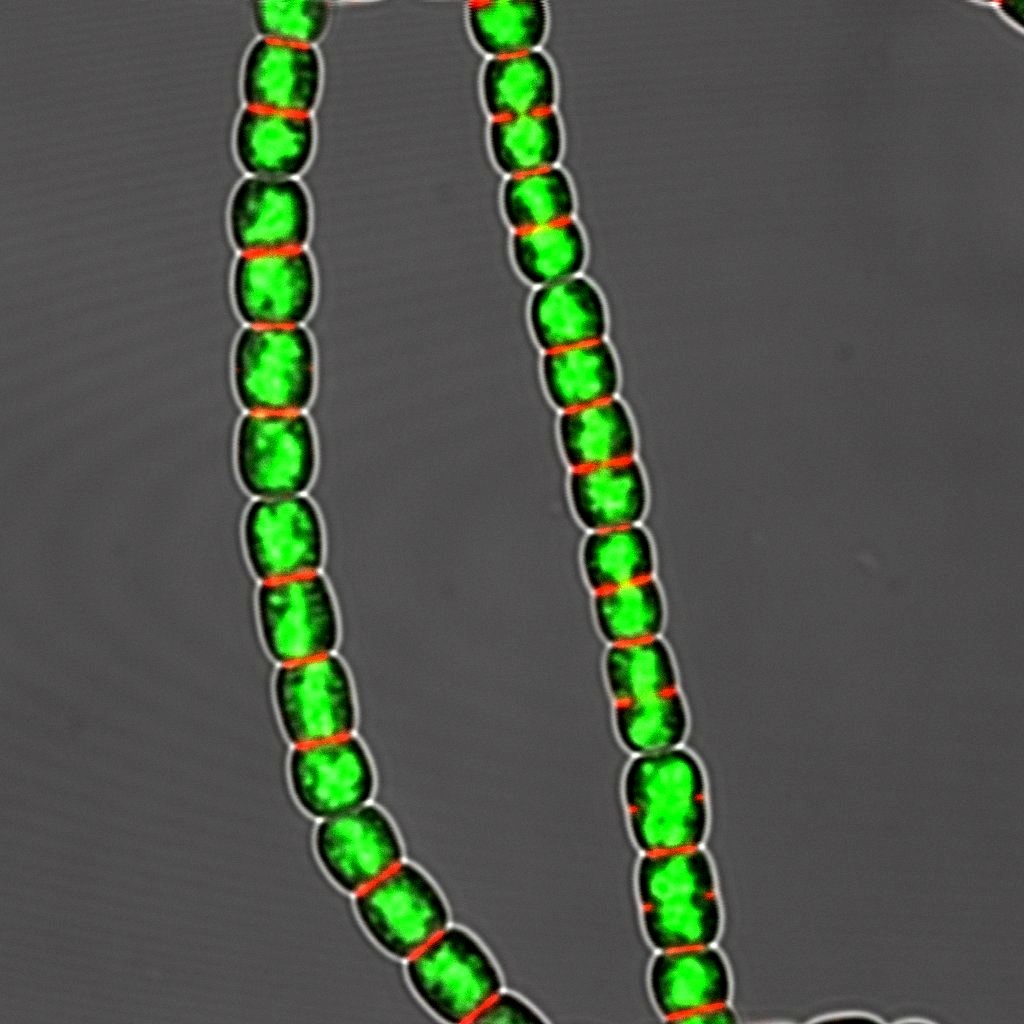Highlights
Cell Division is Controlled over Three Dimensions in Multicellular Cyanobacteria
Cyanobacteria are the earliest oxygenic photosynthetic organisms on Earth, and they have played decisive roles in the evolution of the environment and the life on the planet. Even today, cyanobacteria are still found abundantly in various ecological niches. In some waterbodies under eutrophic conditions, the high proliferation of cyanobacteria may generate hazardous water blooms that are harmful to the environment and human health. The reproduction of cyanobacterial cells depends on symmetric cell division to produce two daughter cells of equal size for each cell cycle. How this division symmetry is achieved is unknown.
Recently, the research group led by Professor ZHANG Cheng-Cai from the Institute of Hydrobiology (IHB) of the Chinese Academy of Sciences reported the existence of a three-dimensional control system for symmetric cell division in the cyanobacterium Anabaena sp. PCC 7120 (Anabaena). The result has been published online in PNAS Nexus.
Anabaena lives in a multicellular form, with chains of cells growing in one dimension, suggesting that both the placement and the angle of the division planes are controlled in every single cell for such a one-dimensional growth mode along the long axis. The same group reported in a PNAS paper published in late august 2022 (Xing et al., PNAS 119:e2207963119) that a protease HetF controlled cell division by cleaving a cell division inhibitor PatU3. However, the function of PatU3 in cell division is unclear.
In this study, by statistical analysis, the researchers found that inactivation of patU3 and the conserved minC and minD genes affected cell division in a way that it may occur at any place over a 360° angle in three dimensions across different cellular sections, producing not only cells with irregular sizes, but also branching filaments.
Based on these results, the researchers propose that both the Min system and PatU3 inhibit alternative division sites at the polar regions of a cell, with PatU3 acting in subregions closer to cell centre, while MinCD closer to cell poles.
In addition, PatU3 restricts the angle of the division planes to 90° relative to the long cell axis, all in parallel in different cells, producing straight filament. The synergy of these two systems ensures symmetric cell division to produce daughter cells of equal size. Such a three-dimensional control system has been rarely reported in bacteria.
This study provides a new direction for studying the localization mechanism of cell division sites in filamentous cyanobacteria, and contributes to the understanding of the process of cyanobacteria proliferation and its control measure.

Three-dimensional control of division site positioning in Anabaena. (Image by IHB)

Fluorescent image of the filamentous cyanobacterium Anabaena PCC 7120. (Image by IHB)
(Editor: MA Yun)